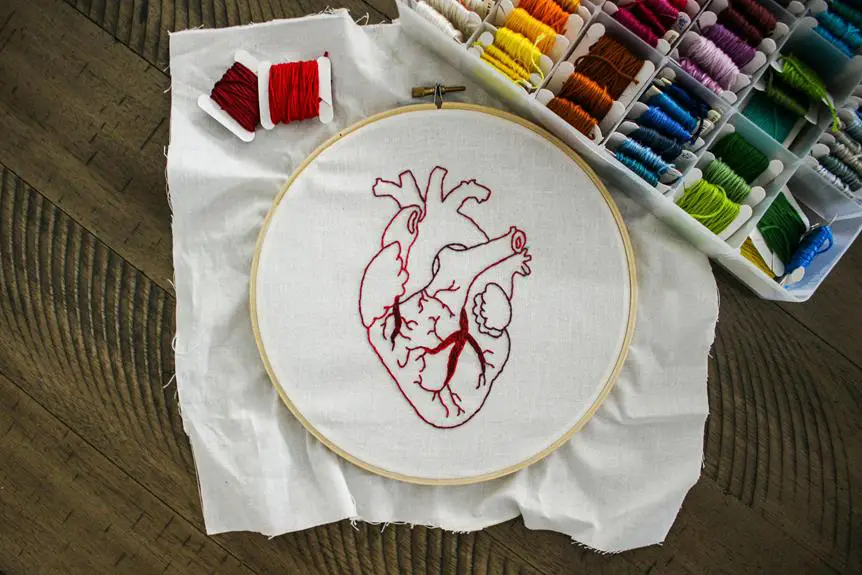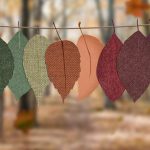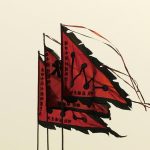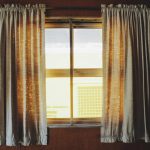When you consider fabric options for your home or projects, Jacquard and damask often come to mind, but do you really know how they differ? While both boast intricate designs, their weaving techniques and textures set them apart. Jacquard's bold, layered patterns contrast with damask's elegant, reversible motifs. Understanding these distinctions can help you make informed choices for your decor. But what about their practical uses and maintenance? The nuances might surprise you.
Table of Contents
Understanding Jacquard Fabric
Jacquard fabric features intricate patterns woven directly into the material, showcasing a blend of artistry and technology. When you look closely, you'll notice these designs aren't printed or embroidered; they're created using a specialized loom that lifts individual threads to form complex patterns. This process allows for a variety of textures, colors, and images, making Jacquard fabric versatile for many applications.
You might find Jacquard fabric in upholstery, drapery, and even fashion. One of its key benefits is durability; the weave structure is strong, which means it can withstand wear and tear better than other fabrics. Plus, the vividness of the patterns often means they remain vibrant over time without fading.
Another advantage is the fabric's ability to mimic the look of more expensive textiles. You can achieve the elegance of silk or brocade without the hefty price tag.
When shopping for Jacquard, pay attention to the weight and feel of the fabric, as this can influence its suitability for your specific project. Ultimately, understanding Jacquard fabric helps you appreciate its beauty and functionality, making it a wonderful choice for various design needs.
Exploring Damask Patterns
While Jacquard fabric showcases complex designs, Damask patterns are equally captivating, featuring elegant motifs that often display a subtle sheen and a reversible quality. These patterns can transform your space, adding a touch of sophistication and style.
Whether you're looking to enhance your home decor or create stunning garments, Damask offers a variety of options to choose from.
Here are four key characteristics of Damask patterns:
- Reversible Designs: You can flip the fabric to reveal a different yet complementary pattern, providing versatility in styling.
- Intricate Motifs: Common motifs include floral, geometric, and baroque designs, allowing you to find something that resonates with your aesthetic.
- Luxurious Texture: The combination of satin and matte threads creates depth, making the patterns visually striking and tactilely pleasing.
- Timeless Appeal: Damask patterns have been used for centuries, proving their enduring popularity and ability to elevate any setting.
Exploring Damask patterns can lead you to discover numerous ways to incorporate elegance into your life, making it a worthwhile endeavor.
Weaving Techniques Explained
When you explore weaving techniques, you'll notice distinct processes between Jacquard and Damask.
Jacquard weaving allows for intricate designs through its advanced mechanism, while Damask weaving showcases beautiful, reversible patterns.
Understanding these characteristics and their design differences can help you appreciate the artistry behind each style.
Jacquard Weaving Process
The Jacquard weaving process employs an intricate system of punched cards to control individual warp threads, allowing for complex patterns and designs. This innovative method revolutionized textile manufacturing, enabling you to create detailed fabrics without the need for manual intervention.
Here's a breakdown of how it works:
- Punched Cards: Each card contains holes representing which threads should be lifted during weaving. As the cards pass through the loom, they dictate the pattern.
- Loom Mechanism: The loom reads the punched cards, automatically raising and lowering specific warp threads to create the desired design.
- Pattern Complexity: You can achieve intricate designs, from simple geometric patterns to elaborate florals, making Jacquard fabrics highly sought after.
- Versatility: This technique isn't just limited to textiles; it can also be applied in various industries, including carpets, upholstery, and even fashion.
Damask Weaving Characteristics
Damask weaving showcases its unique ability to create reversible patterns through a technique that combines satin and plain weaves, resulting in rich textures and intricate designs.
You'll notice that the satin weave provides a smooth, lustrous finish, while the plain weave offers a sturdier, matte appearance. This interplay not only enhances visual appeal but also creates a tactile experience that invites touch.
When you explore damask fabrics, you'll find that they're typically woven on a jacquard loom, allowing for complex designs to emerge. The process involves lifting specific warp threads to create the intricate patterns, making it both an art and a science.
This versatility means that damask can be made from various fibers, including silk, cotton, or linen, each contributing to its overall quality and feel. Additionally, the thickness of the yarn used can affect the drape and durability of the finished product.
In your search for high-quality textiles, you'll appreciate that damask weaving not only prioritizes aesthetics but also emphasizes functionality, making it a popular choice for everything from table linens to upholstery.
Patterns and Design Differences
Often, you'll notice that jacquard and damask fabrics differ significantly in their weaving techniques, resulting in distinct patterns and designs that cater to various aesthetic preferences. Understanding these differences can help you choose the right fabric for your needs.
- Jacquard Weaving: This technique uses a special loom that allows for intricate patterns and detailed designs. Each thread is controlled individually, enabling complex creations, from florals to geometric shapes.
- Damask Weaving: In contrast, damask utilizes a simpler technique, often with a single color on a contrasting background. The designs typically feature a reversible pattern, giving you versatility in how you display the fabric.
- Texture: Jacquard fabrics often have a richer texture due to their multi-layered patterns, while damask tends to feel smoother and more elegant.
- Applications: You'll find jacquard fabrics used in upholstery and curtains, whereas damask is popular for table linens and formal wear due to its classic appeal.
Design Characteristics Comparison
Jacquard and damask fabrics showcase distinct design characteristics that influence their overall aesthetic and texture. When you consider these fabrics, you'll notice that jacquard often features intricate, multi-layered patterns that create depth. On the other hand, damask typically presents a more subtle, monochromatic design, often relying on light and shadow to create its visual effect.
Here's a quick comparison of their design characteristics:
| Feature | Jacquard |
|---|---|
| Pattern | Complex, multi-layered |
| Texture | Thick, textured surface |
| Color | Varied, vibrant hues |
| Use of Light | High contrast with shadows |
| Feature | Damask |
| Pattern | Simple, elegant motifs |
| Texture | Smooth, flat surface |
| Color | Typically monochromatic |
| Use of Light | Subtle play of light and shade |
Practical Uses in Decor
When it comes to practical uses in decor, both jacquard and damask fabrics offer unique advantages that can enhance your interior design. You'll find that their rich textures and intricate patterns can elevate the look of any space.
Here are some ways you can incorporate these fabrics into your decor:
- Upholstery: Use jacquard or damask for upholstering furniture like sofas and chairs to create a luxurious focal point that invites comfort.
- Curtains: Opt for drapes made from these fabrics to add depth and elegance to your windows. Their weight helps in light control while adding a touch of sophistication.
- Table Linens: Both jacquard and damask work beautifully for tablecloths, napkins, and runners, making mealtime feel special and stylish.
- Accent Pillows: Scatter throw pillows in jacquard or damask fabrics around your living space. They can serve as pops of color or texture, enhancing your overall decor theme.
Care and Maintenance Tips
When it comes to caring for your jacquard or damask fabrics, knowing the right washing instructions is essential.
You'll also want effective stain removal techniques to keep your pieces looking their best.
Let's explore the best practices for maintaining these beautiful textiles.
Washing Instructions
To keep your fabrics looking their best, always check the care label for specific washing instructions before cleaning. Jacquard and damask fabrics can have different washing requirements, so taking a moment to read the label can save you from potential damage.
Here are some important washing instructions to follow:
- Use Cold Water: Washing in cold water helps preserve colors and prevents shrinkage. Hot water can be harsh on delicate fabrics.
- Gentle Cycle: Choose a gentle or delicate cycle on your washing machine to reduce wear and tear. This is especially important for intricate designs.
- Mild Detergent: Opt for a mild detergent that's free from bleach or harsh chemicals. This keeps your fabric's integrity intact while still getting it clean.
- Air Dry: Whenever possible, air dry your fabrics to avoid the heat of a dryer, which can damage the fibers and cause fading.
Stain Removal Techniques
Stains on jacquard and damask fabrics can be tricky, but acting quickly can make all the difference in successful removal. Start by gently blotting the stain with a clean, dry cloth to absorb as much liquid as possible. Avoid rubbing, as this can spread the stain or damage the fabric.
Here's a handy guide for treating common stains:
| Stain Type | Treatment |
|---|---|
| Red Wine | Blot with cold water, then use a mix of mild dish soap and hydrogen peroxide. Rinse. |
| Grease | Sprinkle cornstarch on the stain, let it sit for 15 minutes, then vacuum. Wash with warm water. |
| Ink | Dab with rubbing alcohol using a cotton ball. Blot until the stain lifts, then rinse. |
After treatment, always test any solution on a hidden area first to ensure it won't damage the fabric. Finally, when washing, follow specific care instructions for jacquard or damask to keep your items looking their best. Remember, the key is to act fast and handle the fabric gently!
Frequently Asked Questions
Are Jacquard and Damask Fabrics Suitable for Outdoor Use?
Jacquard and damask fabrics aren't typically recommended for outdoor use. They're more suited for indoor settings. If you want durability against weather elements, consider fabrics specifically designed for outdoor environments instead.
How Do Jacquard and Damask Fabrics Differ in Cost?
When you compare jacquard and damask fabrics, you'll find jacquard typically costs more due to its intricate weaving process. Damask, while elegant, usually comes at a lower price point, making it a budget-friendly option.
Can Jacquard and Damask Patterns Be Customized?
Yes, you can customize jacquard and damask patterns to suit your style. Many manufacturers offer design options, allowing you to choose colors, motifs, and sizes, making your fabric truly unique and personal.
What Are the Environmental Impacts of Jacquard and Damask Production?
When you consider the environmental impacts of jacquard and damask production, you'll find that factors like water usage, energy consumption, and chemical runoff significantly affect ecosystems. Sustainable practices can mitigate some of these negative effects.
Which Fabric Is More Durable Over Time, Jacquard or Damask?
When considering durability, jacquard fabrics often outperform damask. Their intricate weaving process creates a stronger structure, meaning you'll likely find jacquard maintains its integrity and appearance longer over time compared to damask options.
- How Does Ring Spun Cotton Affect Garment Fit and Shape Retention? - August 13, 2024
- What Are the Challenges in Producing Ring Spun Cotton? - August 13, 2024
- Is Ring Spun Cotton Suitable for Plus-Size Clothing? - August 13, 2024







